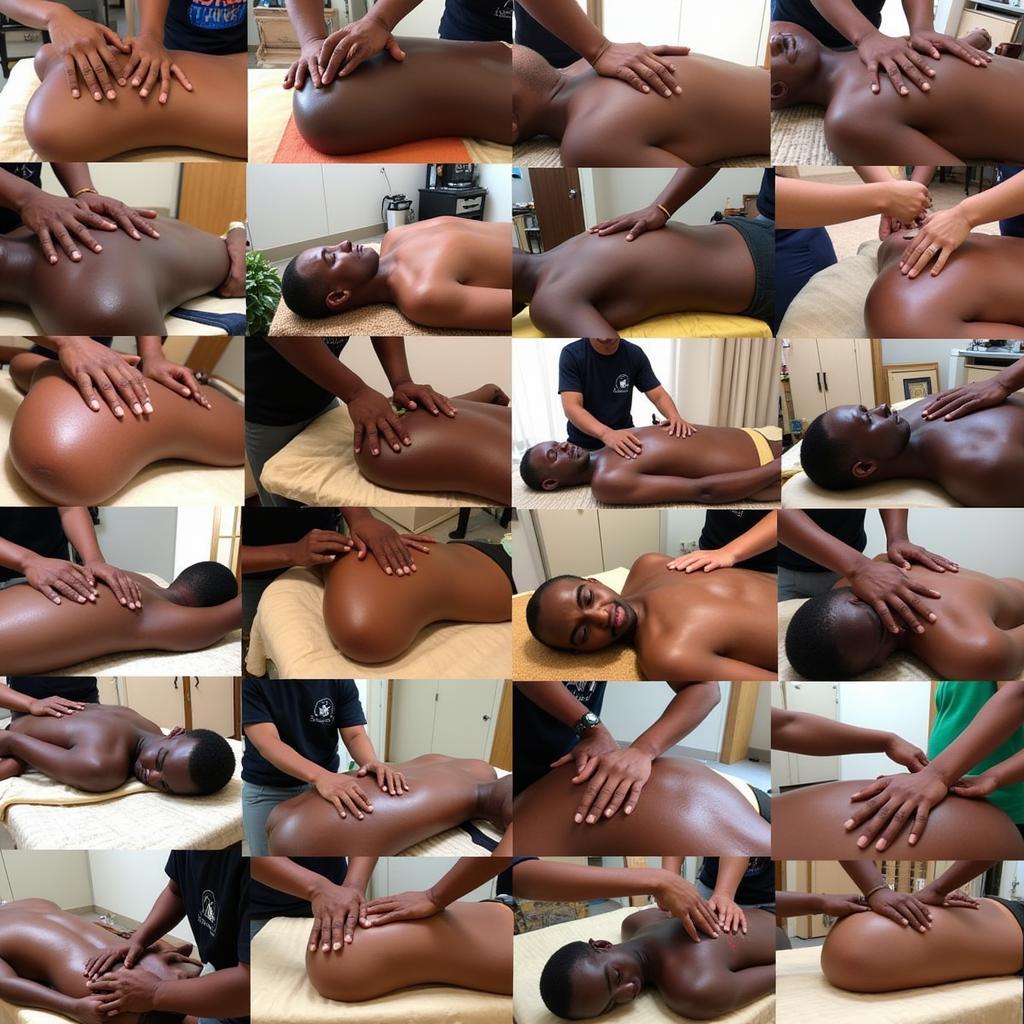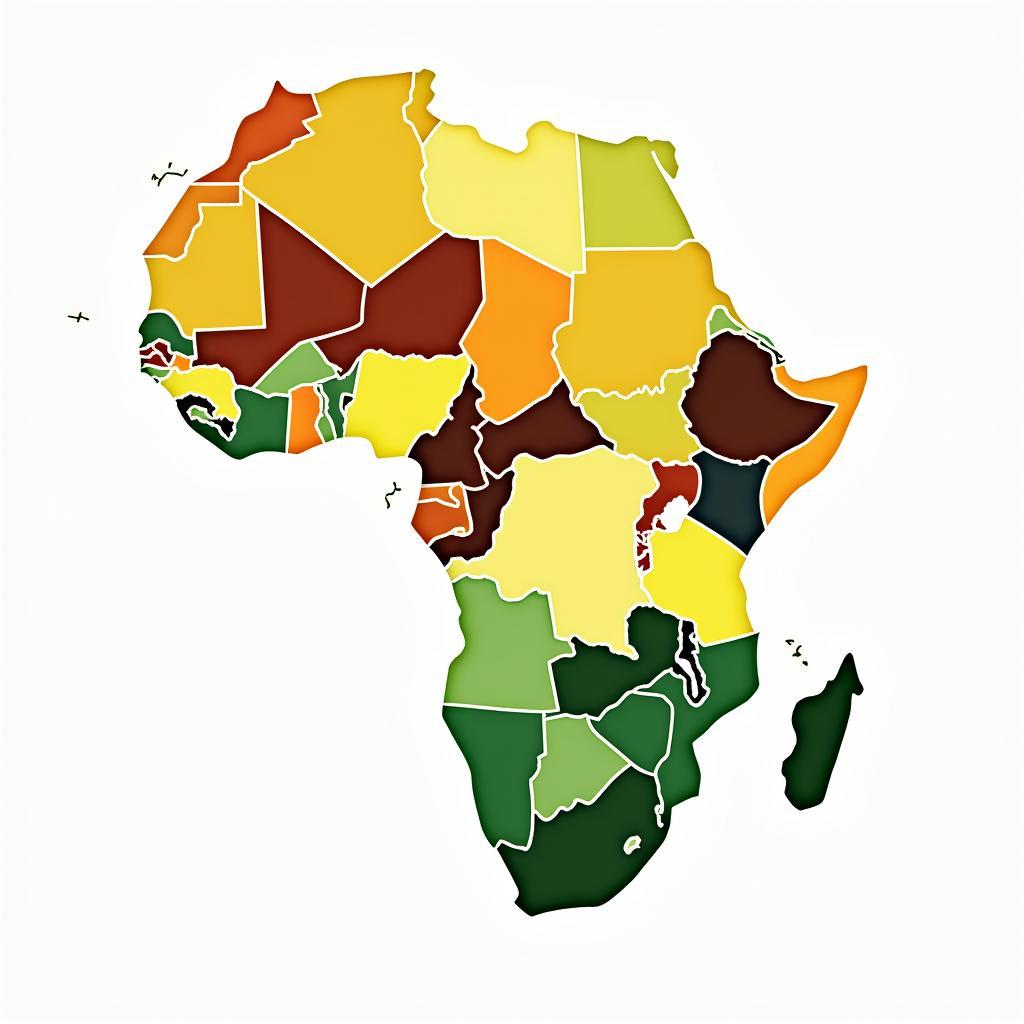A Guide to the Vibrant World of African Fashion Skirts and Blouses
The beauty of African fashion lies in its vibrant colors, intricate patterns, and unique designs. Skirts and blouses, staples in many African wardrobes, showcase the rich cultural heritage and artistic expressions of the continent. This guide will take you on a journey through the captivating world of African Fashion Skirts And Blouses, exploring their history, styles, and cultural significance.
The Rich History of African Skirts and Blouses
African clothing has a long and rich history, dating back centuries. The designs and materials used were influenced by various factors, including climate, resources, and cultural practices. Skirts and blouses have always been integral parts of African attire, evolving over time to reflect the changing needs and tastes of different communities.
A World of Styles and Fabrics
African fashion skirts and blouses come in a wide array of styles and fabrics, reflecting the diversity of the continent’s cultures and traditions.
Skirts: From Flowing Wraps to Structured Designs
- Wraps: These are often made from vibrant fabrics like Ankara, Kitenge, or Wax print. They are commonly worn in various African countries and offer a versatile look.
- Long Skirts: These skirts can be tailored, with a variety of embellishments and embroidery adding to their elegance.
- Midi Skirts: These skirts hit mid-calf and offer a comfortable and stylish option.
- A-Line Skirts: Flowing and flattering, these skirts are a popular choice for both casual and formal occasions.
Blouses: Variety in Design and Detail
- Dashiki Blouses: This iconic design features a V-neckline and vibrant patterns.
- Buba Blouses: These blouses are often worn in West Africa and feature intricate embroidery and embellishments.
- Kente Blouses: Kente cloth, with its colorful geometric designs, is often incorporated into blouses for special occasions.
- Modern Designs: Contemporary African designers are creating innovative interpretations of traditional styles, incorporating modern cuts and fabrics.
The Cultural Significance of African Skirts and Blouses
African clothing often has a deeper meaning beyond aesthetics. Skirts and blouses can symbolize status, identity, and religious beliefs. For example, the Kente cloth, originating from Ghana, is woven with intricate patterns that convey specific messages about lineage, achievements, and community.
“African fashion is more than just clothes; it’s a story, an identity, and a celebration of our heritage,” says Aisha Mohammed, a renowned African fashion designer. “Skirts and blouses in particular showcase the creativity and artistry of our cultures.”
What are some of the most popular fabrics used in African fashion skirts and blouses?
Some of the most popular fabrics used in African fashion skirts and blouses include:
- Ankara: A colorful cotton fabric with intricate patterns, often used in West African fashion.
- Kitenge: A vibrant printed cotton fabric used in East and Central African fashion.
- Wax Print: A fabric with unique patterns and colors, originating from the Netherlands and adopted in various African countries.
- Silk: This luxurious fabric is often used for special occasions.
- Lace: Lace can be incorporated into skirts and blouses, adding an element of elegance and sophistication.
Where can I buy African fashion skirts and blouses?
You can find African fashion skirts and blouses at a variety of places, including:
- Local African markets: Many cities around the world have African markets where you can find authentic clothing from different African countries.
- Online retailers: Online retailers, such as Etsy, Amazon, and ASOS, offer a wide selection of African clothing.
- African fashion boutiques: Many African fashion boutiques specialize in selling traditional and contemporary African clothing.
Styling African Skirts and Blouses
Styling African fashion skirts and blouses can be both fun and empowering. Here are some tips:
- Play with color and print: Experiment with different combinations of colors and prints to create unique looks.
- Accessorize: Add jewelry, scarves, and head wraps to enhance your outfit.
- Pair with modern pieces: Combine African skirts and blouses with jeans, jackets, or other modern garments.
- Embrace your personal style: Don’t be afraid to express your individual personality through your choice of clothing.
Conclusion
African fashion skirts and blouses are more than just garments; they are a celebration of culture, creativity, and identity. From the rich history and diverse styles to the cultural significance and modern interpretations, these pieces offer a unique window into the vibrant world of African fashion. By embracing the beauty and diversity of African fashion, you can express your individual style and connect with the rich cultural heritage of the continent.
FAQ
1. What are some of the most popular colors used in African fashion skirts and blouses?
Popular colors include bold and vibrant hues like red, yellow, green, blue, purple, and orange.
2. What are some examples of traditional African skirts and blouses?
Examples include the boubou (Senegal), the kitenge (Tanzania), the dashiki (Nigeria), and the kente (Ghana).
3. What is the difference between Ankara, Kitenge, and Wax Print?
While all three are colorful printed fabrics, they have unique origins and patterns. Ankara is typically found in West Africa, Kitenge in East and Central Africa, and Wax Print originated in the Netherlands but is widely adopted in various African countries.
4. How can I incorporate African fashion into my everyday wardrobe?
You can start by adding a few key pieces, such as a colorful skirt or blouse, to your existing wardrobe. You can also experiment with African-inspired accessories, such as jewelry or head wraps.
5. What are some of the latest trends in African fashion?
Some of the latest trends include the use of sustainable fabrics, the fusion of traditional and contemporary styles, and the increasing popularity of African fashion designers on the global stage.

